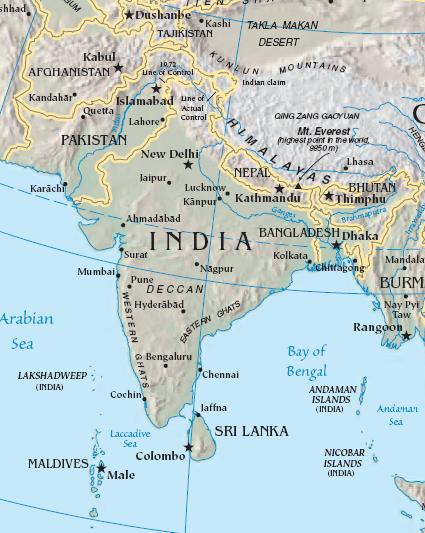This is an old revision of this page, as edited by Niteowlneils (talk | contribs) at 21:17, 4 April 2004 (tweak for non-IE browsers). The present address (URL) is a permanent link to this revision, which may differ significantly from the current revision.
Revision as of 21:17, 4 April 2004 by Niteowlneils (talk | contribs) (tweak for non-IE browsers)(diff) ← Previous revision | Latest revision (diff) | Newer revision → (diff)
South Asia is a geo-cultural region comprising the modern states of India, Pakistan, Bangladesh, Sri Lanka, Nepal, Bhutan, and the Maldives. Often Afghanistan is also included, sometimes with the northern part of Afghanistan placed in Central Asia.
It includes the region sometimes called the Indian subcontinent. It contains well over a fifth of the world's population and, after Sub-Saharan Africa, is also one of the world's poorest regions.
This region has a long history, and ancient civilisations have sprung up from the Indus Valley. The region was at its most prosperous before the 17th century; colonialism lead to the conquering of the region, which began to fall apart in the feud between Britain, France, Portugal and Holland. With the post-colonial period of the 20th century, the region was partitioned into India and the two Pakistans, one of which became Bangladesh; Bhutan gained independence from India. Afghanistan and Nepal were separate cases.
See also: History of South Asia
Southern Asia sometimes refers to all of Asia that was not part of the Soviet Union.